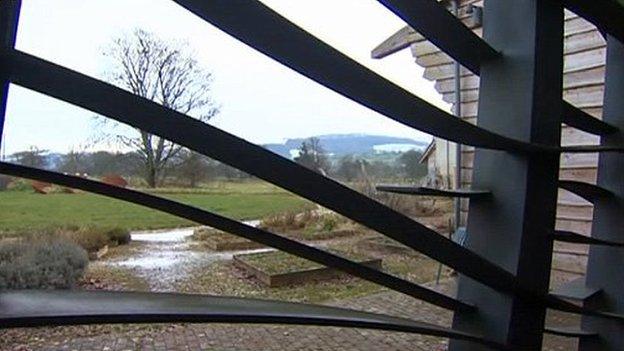European aid: Bigger projects mean bigger risks
- Published

Canolfan Cywain in Bala failed to attract predicted visitor numbers and closed in 2011
I remember clearly that feeling of optimism that there was as the first Objective 1 cheque plopped into the Welsh economy.
The UK economy was growing and Wales was to benefit from a huge injection of cash for its poorer communities. Wales was given £1.5bn because west Wales and the valleys were among the poorest parts of the European Union.
That first phase in 2000 to 2006 was typified by a myriad of schemes to try to get more people into work or to attract investment.
There was a feeling that it should be shared to a certain extent and local authorities and the Welsh Development Agency both had important roles.
Technium became a buzz word - and much needed jobs. The policy implied that if a good-looking business hub was built it would of course attract vibrant new companies who would offer new modern jobs.
It has since been criticised for being ill thought out.
Professor Kevin Morgan from Cardiff University described the Technium policy as a fiasco. He said: "We focused on buildings rather than building relationships with the business sector."
On the whole they failed to attract vibrant new companies or lift parts of Wales out of poverty.

The Technium Springboard Centre in Cwmbran was one of several built to attract hi-tech firms
Prof Morgan says it is deeply depressing that we qualified for Objective 1 aid in the first place and doubly depressing that we did not deploy it effectively to stem economic decline.
There were other buildings costing millions that didn't live up to their ambitious business plans. One that has hit the headlines is a rural heritage centre at Bala - Canolfan Cywain.
Around £2m of public money was initially spent on it, some from the European Union. It failed to attract visitors and three years later it was mothballed at a total cost to the public purse of £3.4m.
And in Pontrhydfendigaid in Ceredigion £3m - around half from EU funding - was spent on an arts centre called the Pavilion that seats 2,000 people, external. That still holds some events but is not the arts centre that had been hoped for.
In 2007 west Wales and the valleys qualified a second time for the highest level of European Union aid. The strategy had changed by this point and skills were central to plans to spend the money.
Jobs Growth Wales, part funded by the EU, was set up and has won wide support.
In the last two years, this scheme alone has given 11,000 young people work experience and more than 9,000 have had a job or further training.
The Welsh European Funding Office says in total 55,000 people have been helped into work through jobs schemes partly financed by the EU since 2007.
So west Wales and the valleys is about to get this special type of EU funding for the poorest parts of Europe for a third time.
David Hughes, head of the European Commission Office in Wales, says it would be wrong to say Wales is at fault.
He says that between 2000 and 2011 the value of what the UK produces has fallen by 15% since 2000 compared with the EU average and so it would have been extremely difficult for Wales to pull itself up sufficiently against that decline. Cornwall and the Scilly Isles are also eligible for this pot of money three times in a row.
The next tranche of money - £2bn - arrives in Wales very soon. It is expected to be used to support fewer and bigger projects and bigger projects means taking bigger risks.
- Published17 April 2014

- Published18 December 2013

- Published22 April 2012
- Published14 March 2012

- Published18 November 2010